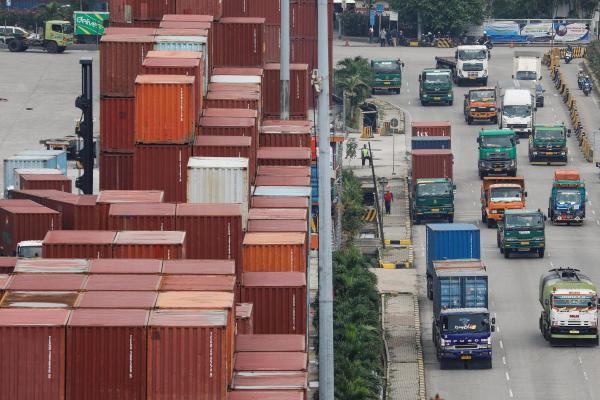JAKARTA, June 2 — Indonesia booked a trade surplus of around US$160 million (RM680.9 million) in April, the lowest since April 2020, amid a surge in imports, while the country's inflation cooled in May, data from the statistics bureau showed today.
A Reuters poll of analysts had predicted a surplus of US$3.04 billion (RM12.93 billion).
Southeast Asia's biggest economy has recorded a trade surplus every month for five years, supporting its external balance. But the April print was the narrowest in that period; the surplus in March was US$4.33 billion (RM18.42 billion).
Last month, imports jumped 21.84 per cent on a yearly basis to US$20.59 billion (RM87.63 billion), with capital goods rising the most. The median forecast in the poll was for a 7.75 per cent rise.
Exports from the resource-rich country rose 5.76 per cent in April from a year earlier to US$20.74 billion (RM88.26 billion), matching the poll's median forecast. Shipments of mining products slid more than 20 per cent, hurt by weak coal prices.
Shipments to the United States (US) in the reported month reached US$2.08 billion (RM8.85 billion), with some of it being affected by Washington's 10 per cent tariff imposed in early April.
The US is one of Indonesia's biggest trade partners, and Jakarta is currently negotiating with Washington to reduce tariffs set to take effect in July.
Bank Central Asia economist Barra Kukuh Mamia said the higher-than-consensus import growth was due to an influx of products from China and Singapore.
"All these indicate temporary disruptions related to Trump tariffs, which may reverse in May as Trump suspended the tariff on China," he said.
Meanwhile, the bureau's data showed Indonesia's annual inflation rate in May decelerated more than expected to 1.60 per cent, compared with 1.95 per cent in April. A Reuters poll had predicted inflation would remain steady at 1.94 per cent.
The April core inflation rate also came in slightly below forecast at 2.4 per cent. The poll had estimated a 2.5 per cent rate.
The April rate was close to the lower end of the local central bank's 1.5 per cent to 3.5 per cent target range. Taking advantage of low inflation, the central bank has cut interest rates three times since September.
The factor keeping inflation low was an increase in rice output. Rice production in the January-July period is estimated to reach 21.76 million metric tons, up nearly 15 per cent year-on-year.
— Reuters




